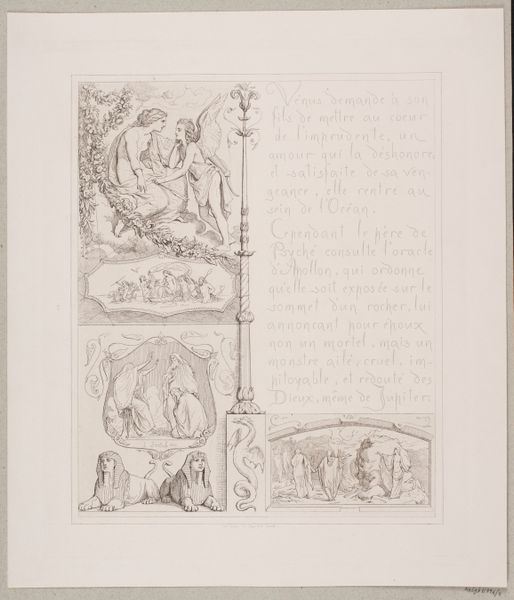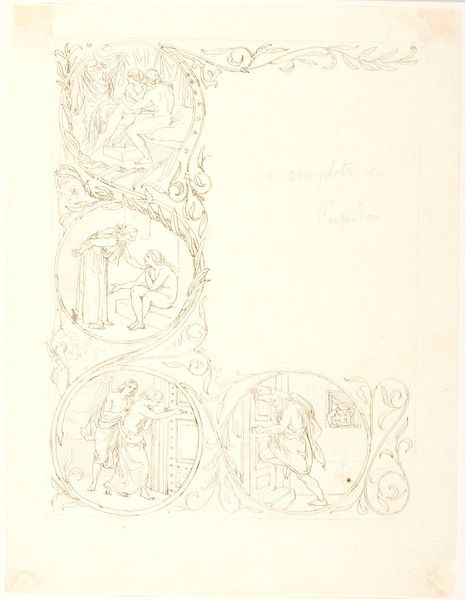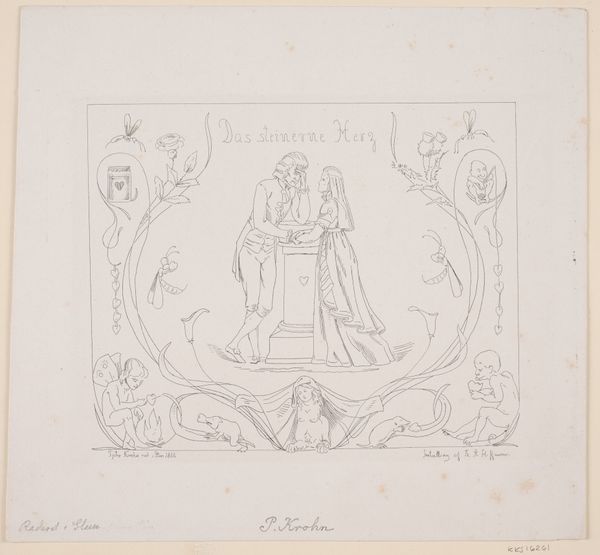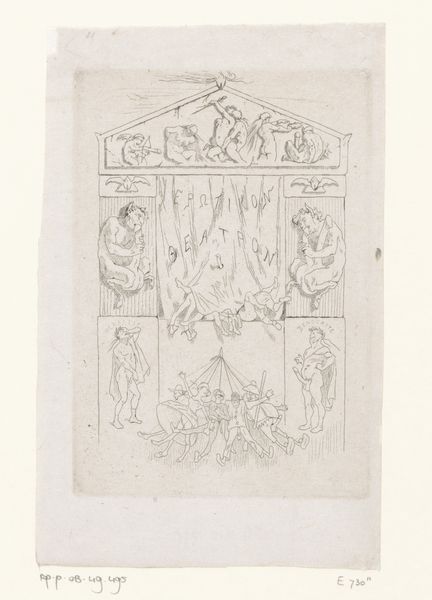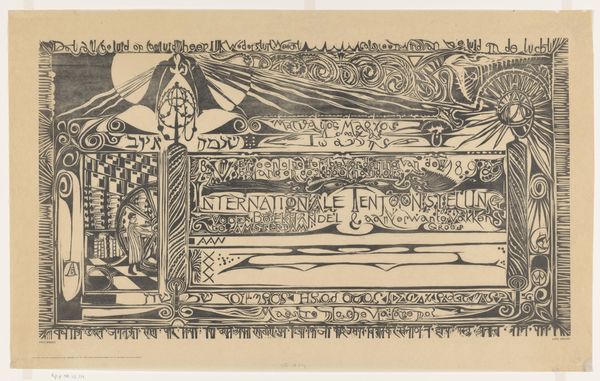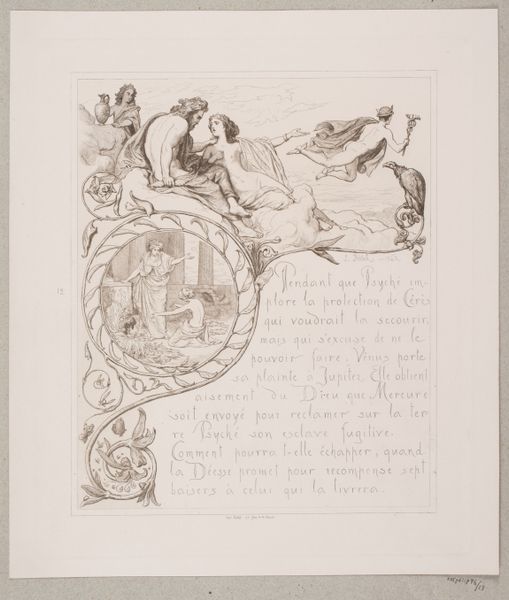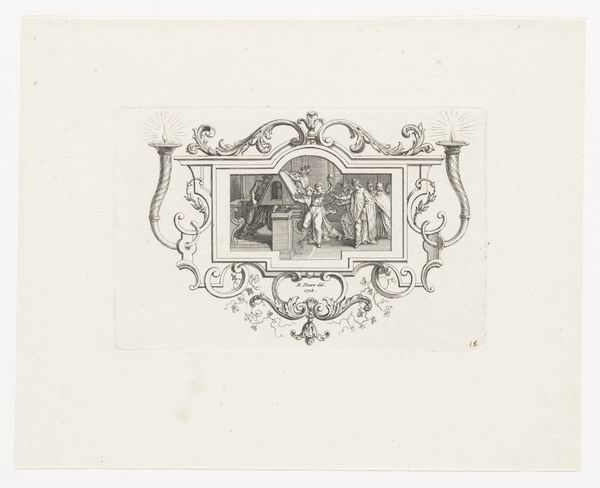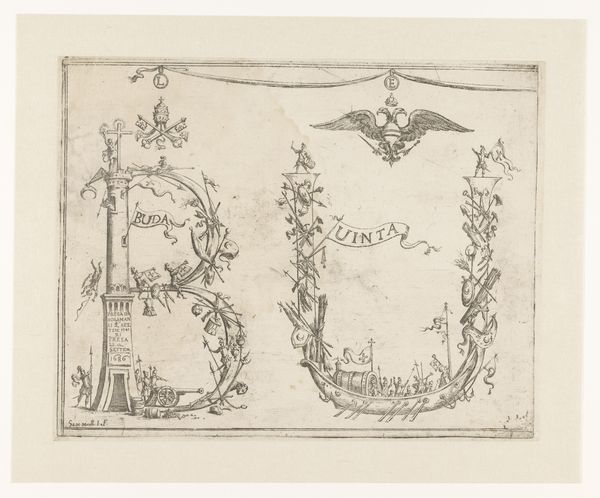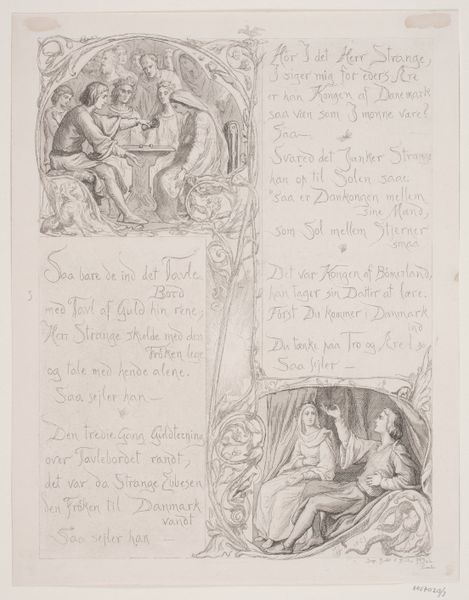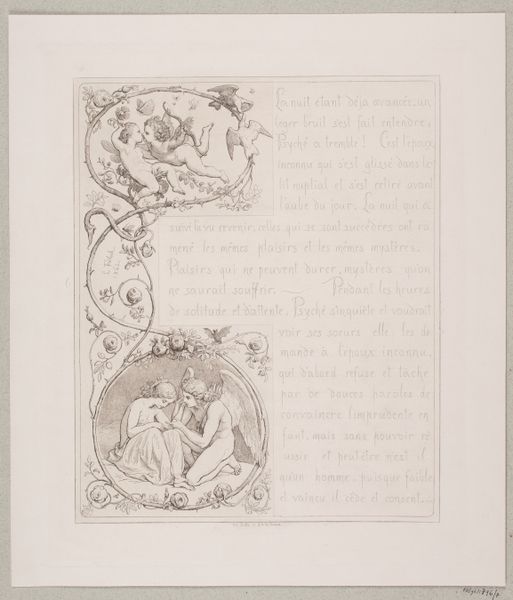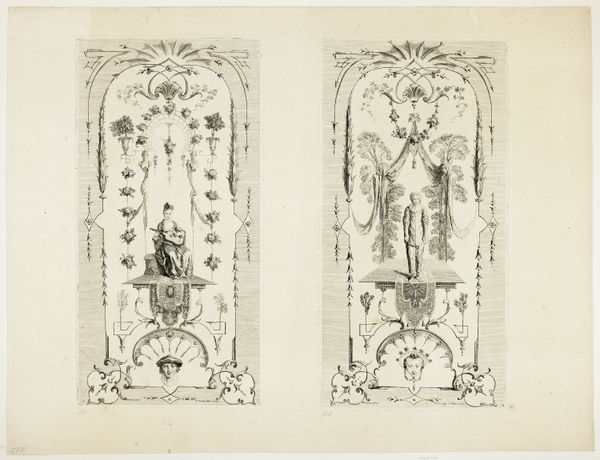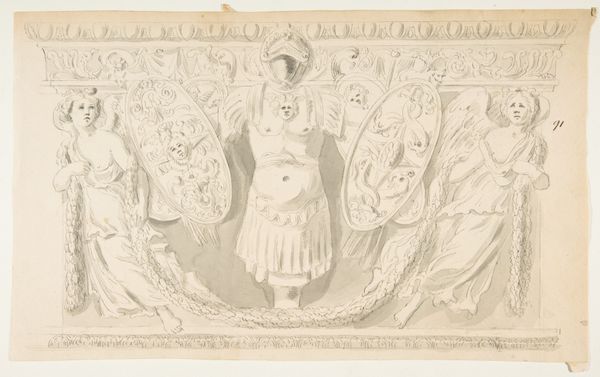
drawing, ink
#
drawing
#
medieval
#
ink
#
history-painting
Dimensions: height 285 mm, width 444 mm
Copyright: Rijks Museum: Open Domain
Curator: I’m immediately drawn in by the starkness. The high contrast, black ink on what must have once been pristine paper. It has a chilling, but ultimately matter-of-fact, feel. Editor: Exactly. Let’s unpack this further. What we're seeing is a drawing attributed to Leendert Springer, made before 1844, titled "Doden dansen en bezoeken mensen," which translates to "The dead dance and visit people." It's rendered in ink, a medium that lends itself particularly well to the themes and visual language associated with medieval art. Curator: Given its clear allusions to death and medieval styles, one naturally thinks about the plague and its pervasive impact. The widespread impact of such deadly illness surely impacted art production and altered traditional artmaking methods? Editor: Absolutely. The Black Death fundamentally reshaped European society, triggering cultural anxieties that are richly expressed in visual culture of the period, not only in art but in wider performance and communal behaviors too. Think about processions, rituals—even medical responses—were all theatrical performances in a sense. Springer’s drawing participates in a long, continuous discussion. Curator: Note too how different figures occupy discrete spatial zones across the sheet; they do not co-mingle spatially but rather occupy highly regulated spaces in a kind of thematic display. The composition allows the artist to visually isolate specific modes of labor—like plowing—or to set distinct social actors side by side. It reminds us of the physical structures of workshops themselves, or printed pattern books, organizing different pieces for easier use. Editor: Which underlines the accessibility of the message, it doesn't just depict the 'dance of death', but how it infiltrates every corner of life and society. The grim reaper doesn't just visit kings or priests, but ploughmen in the fields, the ill, even lovers. No one escapes social upheaval and historical forces. It is interesting that this was drawn some centuries after the Black Death had passed. Curator: A crucial reminder about historical anxieties—Springer, here, isn’t just relaying earlier ideas and images, but engaging in an act of continuous production of memory, reflecting changing and increasingly secular beliefs. The ink, the style, the reproduction of older cultural tropes... these combine into a fascinating, poignant historical material document. Editor: It encourages me to really probe historical frameworks and unpack all sorts of social hierarchies from gender and religion to labor. Hopefully, listeners will engage similarly!
Comments
No comments
Be the first to comment and join the conversation on the ultimate creative platform.
